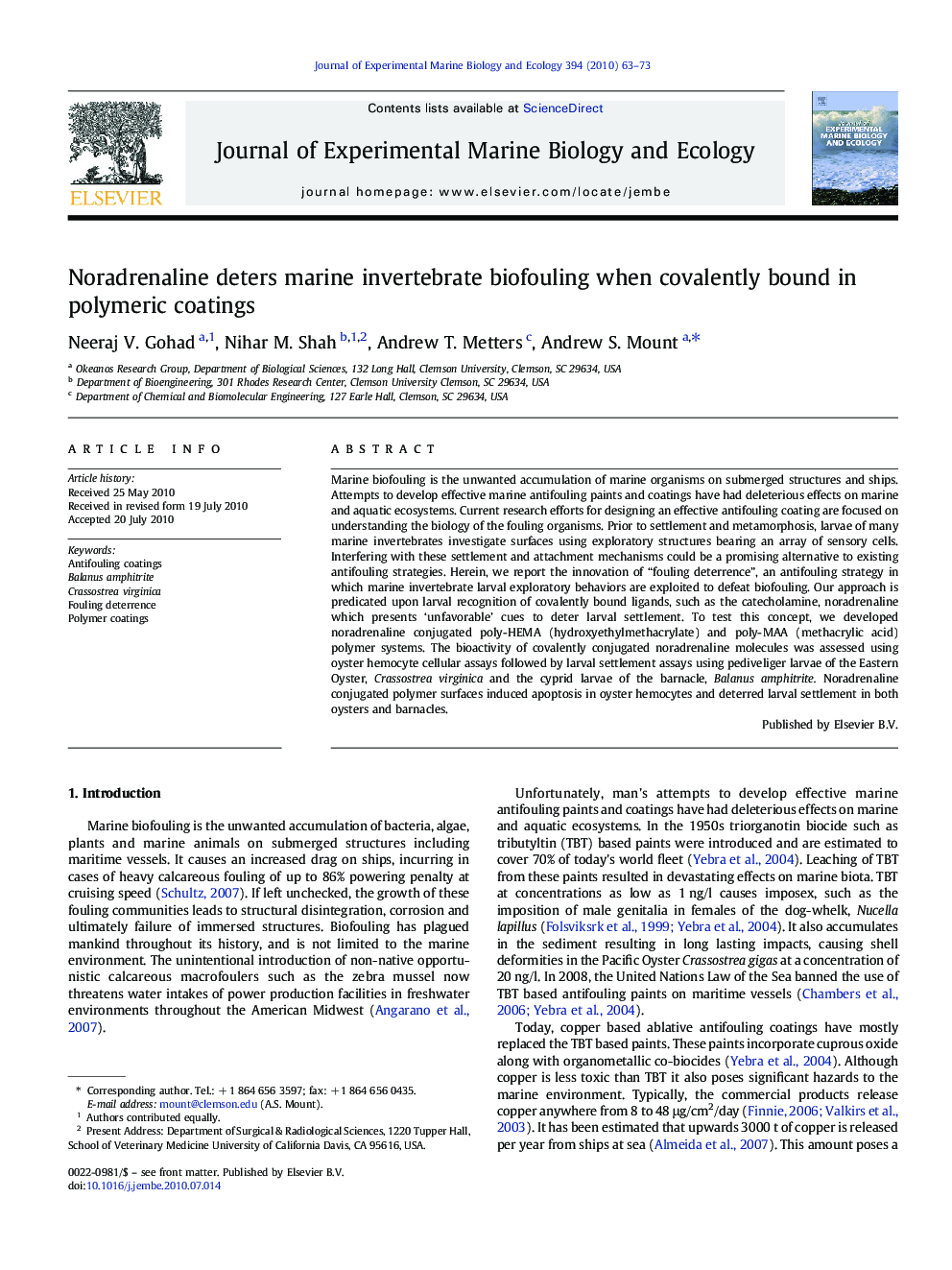| Article ID | Journal | Published Year | Pages | File Type |
|---|---|---|---|---|
| 4396409 | Journal of Experimental Marine Biology and Ecology | 2010 | 11 Pages |
Marine biofouling is the unwanted accumulation of marine organisms on submerged structures and ships. Attempts to develop effective marine antifouling paints and coatings have had deleterious effects on marine and aquatic ecosystems. Current research efforts for designing an effective antifouling coating are focused on understanding the biology of the fouling organisms. Prior to settlement and metamorphosis, larvae of many marine invertebrates investigate surfaces using exploratory structures bearing an array of sensory cells. Interfering with these settlement and attachment mechanisms could be a promising alternative to existing antifouling strategies. Herein, we report the innovation of “fouling deterrence”, an antifouling strategy in which marine invertebrate larval exploratory behaviors are exploited to defeat biofouling. Our approach is predicated upon larval recognition of covalently bound ligands, such as the catecholamine, noradrenaline which presents ‘unfavorable’ cues to deter larval settlement. To test this concept, we developed noradrenaline conjugated poly-HEMA (hydroxyethylmethacrylate) and poly-MAA (methacrylic acid) polymer systems. The bioactivity of covalently conjugated noradrenaline molecules was assessed using oyster hemocyte cellular assays followed by larval settlement assays using pediveliger larvae of the Eastern Oyster, Crassostrea virginica and the cyprid larvae of the barnacle, Balanus amphitrite. Noradrenaline conjugated polymer surfaces induced apoptosis in oyster hemocytes and deterred larval settlement in both oysters and barnacles.
